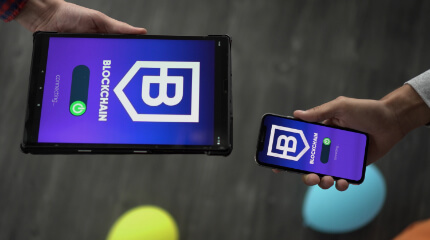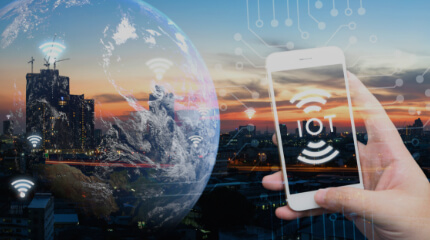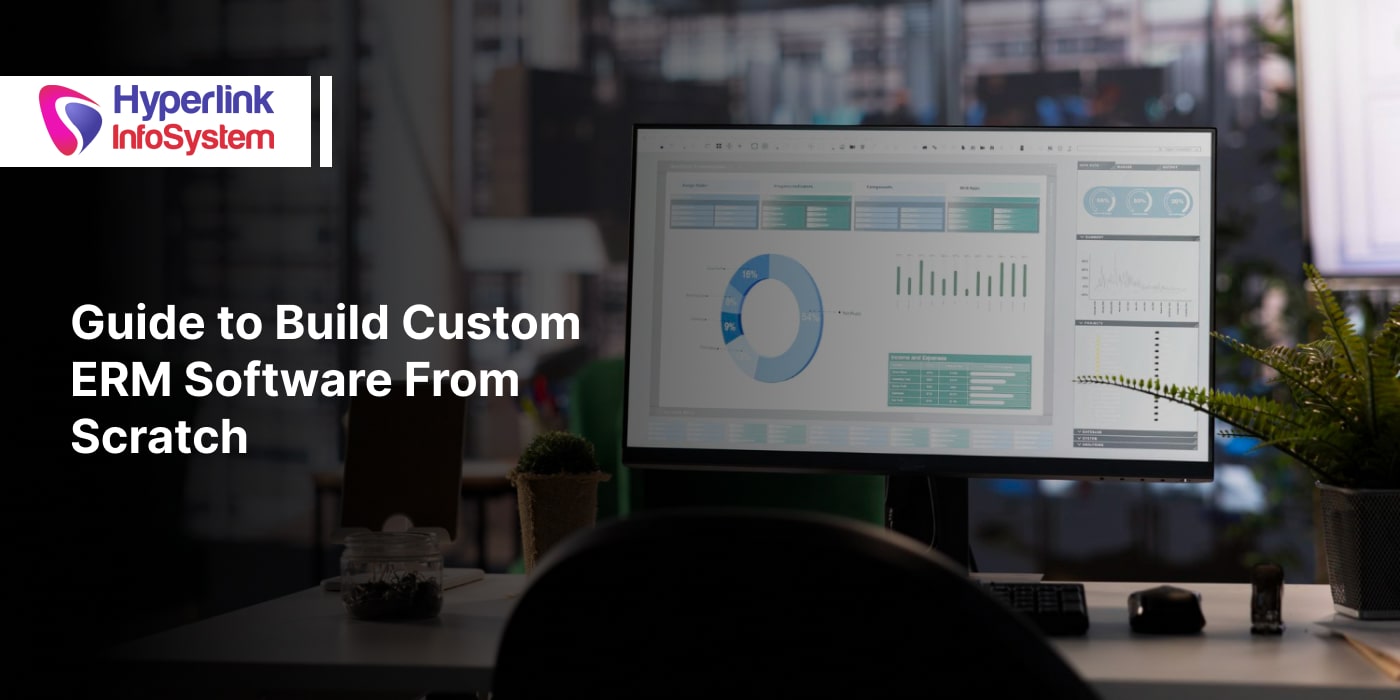How Much Does It Cost to Build a Restaurant Reservation App Like OpenTable?
Jul 2025

People love food in 2025, but their dining behavior has changed. Forget Gen Z, even millennials don’t want to wait for their turn at restaurants. Blame it on smartphones. Simply open your favorite app, choose your favorite food, and it will arrive in less than 30 minutes. The value of the food app delivery industry is expected to reach $213 billion by 2030.
Restaurants are under immense pressure to match the convenience and personalized services that food apps offer. The solution lies in building a restaurant table reservation app like OpenTable. Does developing a restaurant table reservation app make sense when online food ordering apps dominate the scene? The global dining out market is projected to expand to USD 1.18 trillion by 2029 (10% CAGR), which means that there is a segment of the population that still loves the old-school dining experience.
Besides convenience, restaurant reservation apps integrate with social media apps, allowing businesses to send loyalty offers and VIP perks, plus alert customers about special menus and new arrivals. But let’s talk about the cost for a quick moment. If you are looking to develop a restaurant reservation app like OpenTable, you are looking at an estimated cost of anywhere from $80,000 to $150,000.
Creating a restaurant reservation app like OpenTable can be a smart move, but businesses need to weigh the feasibility and long-term impacts before diving in. In this blog, we explore the costs of developing a restaurant reservation app like OpenTable, the challenges companies face, features to consider, and the pros and cons of such an endeavor. Let’s get started.
What Is the OpenTable App?
Chuck Templeton, Eric Moe, and Sid Gorham created the OpenTable app in 1998. The main goal of the app was to make food ordering as seamless as booking online flights. From an electronic reservation booking system in 2000 to mobile apps, waitlist management, loyalty programs, and POS integrations, the OpenTable app has come a long way.
Presently, over 60,000 restaurants in 80+ countries have partnered with OpenTable. Over 134 million diners across the globe use the OpenTable app to enhance their dining experiences.
7 Key Features of the OpenTable Restaurant Reservation App
The OpenTable restaurant reservation app has many features, but we will focus on the five most crucial ones that make it stand out from the competition.
- Real-Time Availability - Live sync with the restaurant’s schedule and table inventory.
- Personalized Recommendations - Based on user history, time, and preferences.
- Integrated POS and CRM - Helps restaurants unify operations.
- Multi-Platform Support - Works on iOS, Android, and the web.
- Guest Management Tools - Collect customer data about preferences, allergies, and feedback.
- Personalization and AI - Monitors customer behavior and offers contextual booking suggestions.
- Monetization and B2B Features - Offers premium placement for restaurants (sponsored listings), yield management tools, and corporate dining solutions.
What Separates the OpenTable Reservation App from the Competition?
Below are the features that separate the OpenTable reservation app from its competitors.
|
Key Strength Areas |
What Makes OpenTable Better? |
|
Scale |
Largest Restaurant & Diner Network - 60,000+ restaurants and 134 million diners |
|
UX |
Effortless, Polished Cross-Platform Performance |
|
B2B Tools |
Deep Reservation, CRM, and Analytics Suite for Restaurants |
|
AI & Personalizatoin |
Smart, Contextual, and Proactive Diner Recommendations |
|
Brand Reputation |
Trusted equally by restaurants and global users. |
Pros and Cons of the OpenTable Restaurant Reservation App
OpenTable is a world-renowned restaurant reservation app. Like every app, it has its share of pros and cons. They are as follows-
|
Pros |
Cons |
|
Large network of restaurants globally |
High restaurant fees, including per-reservation and subscription costs |
|
Easy-to-use app with real-time booking |
Better visibility often requires additional ad spending |
|
Earn rewards through the dining points loyalty program |
Limited customer support, especially during peak hours |
|
Powerful tools for restaurants (seating, waitlists, and analytics) |
No-show and cancellation issues without strong deterrents |
|
Personalized AI-powered suggestions and smart filters |
Less presence in emerging markets such as India and Africa |
|
Effective integration with maps, calendars, and mobile wallets |
Fails to list any local restaurants with good service and reputation |
Stage-Wise Cost to Develop a Restaurant Reservation App like OpenTable
Below is a stage-wise cost that companies will have to incur when developing a restaurant reservation app like OpenTable.
|
Stage |
Key Activities |
Estimated Cost (USD) |
Percentage of Total Cost |
|
Planning and Discovery |
|
$5,000 - $10,000 |
5 to 8 Percent |
|
UI/UX Design |
|
$8,000 - $20,000 |
8 to 12 Percent |
|
Front-End Development |
|
$15,000 - $40,000 |
15 to 25 Percent |
|
Backend Development |
|
$20,000 - $60,000 |
20 to 35 Percent |
|
Admin Panel Development |
|
$10,000 - $25,000 |
10 to 15 Percent |
|
Integrations |
|
$5,000 - $15,000 |
5 to 10 Percent |
|
QA and Testing |
|
$5,000 - $15,000 |
5 to 10 Percent |
|
Deployment and Launch |
|
$3,000 - $7,000 |
3 to 5 Percent |
|
Project Management |
Scrum, Sprint Tracking, Planning, and Reviews |
$5,000 - $10,000 |
5 to 8 Percent |
|
Contingency and Buffers |
|
$4,000 - $10,000 |
5 to 7 Percent |
10 Factors Affecting the Cost to Develop a Restaurant Reservation App like OpenTable
The cost to develop a restaurant reservation app like OpenTable depends on many factors. From the features, app complexity, maintenance, development team, to compliance requirements, each factor affects the cost. Below are the ten most crucial factors that influence the cost of developing a reservation app like OpenTable.
1) App Complexity
Developing a basic app with the bare minimum features, such as reservation booking, user registration, real-time availability, and restaurant details, will cost around 40k to 50k. However, such an app is of no use to businesses competing with OpenTable. These apps must have features that go beyond the ordinary. Premium customers will demand greater personalization, voice chat support, group reservations, and loyalty points.
Even businesses on par with OpenTable or wanting to compete with it will aim for advanced features. Restaurants will benefit from an advanced analytics dashboard, POS & CRM integration, AI-powered table and time optimization, and more. It's no surprise that incorporating such advanced features in the restaurant reservation app will bump up the costs.
Below is a table highlighting the approximate costs to develop apps from basic to advanced.
|
App Complexity |
Features |
Estimated Cost (USD) |
Development Time |
|
Low (MVP) |
Basic search, booking, and user login |
$40,000 - $70,000 |
3 to 4 months |
|
Medium |
Real-time booking, user reviews, and admin panel |
$80,000 - $150,000 |
5 to 7 months |
|
High |
AI, automation, POS integration, and scaling infra |
$150,000 - $300,000+ |
8 to 12+ months |
Note that the figures mentioned in the above table are just to give companies a brief idea. Consult a restaurant app development company for an accurate estimate.
2) Platform Choice
The choice of platform also matters. Be it iOS, Android platforms, web, or a cross-platform app, each one affects the cost. Not just the development cost, the platform choice also affects product time to market, user experience, and long-term scalability. Native app development costs the most because each platform requires a separate codebase. For example, iOS in Swift and Android in Kotlin. Compared to cross-platform development, native development adds 40% to 70% more to the budget.
For those venturing into native app development, native apps are best for handling complex features, while cross-platform app development works wonders for MVP products. Companies can enjoy significant savings, almost 30 to 50 percent on development and maintenance costs with cross-platform solutions. Web apps are also used by restaurants, but they are only good for B2B admin panels, SEO-driven discovery, and as a supplement to mobile apps.
Having said that, web apps have their limitations. They have limited integration capabilities, and they don’t perform as well as native apps. Although progressive web apps have improved greatly in the past few years, they cannot be trusted for real-time synchronization. Below are the costs
|
Platform |
Estimated Cost (USD) |
Mid-Level App |
Advanced App |
Notes |
|
Native iOS + Android |
$130,000 - $160,000 |
Suitable but high cost |
Ideal for premium UX & performance |
Two separate native teams are required. Delivers optimal performance. |
|
Cross-Platform (Flutter/React Native) |
$80,000 - $100,000 |
Most effective for mid-level enterprises |
Feasible for advanced apps with smart engineering |
Single codebase, faster updates, and maintenance |
|
Web Admin and Dashboard |
$25,000 - $40,000 |
Required for the restaurant panel |
Must have for data management and analytics |
Central to the restaurant side access and control |
|
AI/Voice add-on |
$10,000 - $25,000 |
Optional |
Key to smart booking, chat, and personalization |
Adds innovation and user engagement, GPT-based chat, or Alexa/Siri booking |
These costs are just to give you a brief idea. Regardless of the platform, you should consider hiring iOS and Android app developers in India to reduce costs without sacrificing quality.
3) Design and User Experience
If you are thinking about creating a restaurant reservation app like OpenTable, it's crucial to remember that design and UX go beyond aesthetics. For both customers and restaurants, powerful design and UX dictate how you can attract and retain users, plus ensuring the app’s accessibility and efficiency. Customers expect a smooth user experience from the moment they land on the app to booking, along with tailored recommendations.
When customers receive personalized recommendations about the best restaurants in their vicinity, the best time to visit, and the most popular dishes, they build an emotional connection with the app, which fosters trust and loyalty.
Top-notch restaurant reservation apps like OpenTable are built with a strong focus on contextual awareness. The platform gathers information about the customer’s location, past behavior, and suggests the right dishes, restaurants, and pick-up options. It also takes the time of the day and group size into consideration, which enhances customer satisfaction.
The UI/UX cost breakdown for a restaurant reservation app like OpenTable is as follows-
|
Design Phase |
Typical Cost (USD) |
|
User research and persona development |
$2,000 - $5,000 |
|
UX wireframes and journey mapping |
$3,000 - $8,000 |
|
High-fidelity UI design |
$5,000 - $15,000 |
|
Design system creation |
$5,000 - $10,000 |
|
Prototyping and user testing |
$2,000 - $7,000 |
|
Accessibility and localization design |
$2,000 - $6,000 |
4) Backend Development and Server Infrastructure
Think of the backend as the muscles of a restaurant reservation app. Muscles do most of the work in the human body; they are behind most movements, but we can’t see them. Similarly, the backend does all the heavy lifting in a restaurant reservation app. It performs complex tasks such as data processing, user authentication, and bookings.
Looking ahead to 2025, backend systems and becoming increasingly complex due to the influence of AI, the need for real-time syncing, security demands, and integration of various third-party services such as payment gateways, SMS APIs, and restaurant POS systems. Businesses must also adopt security measures like data encryption, anonymization, and secure authentication, all while aligning with local laws.
Additionally, server infrastructure represents a significant cost for restaurants, particularly with the dependence on cloud server infrastructure. Leading cloud platforms, including AWS, Google Cloud Platform, and Microsoft Azure, enable restaurants to manage higher traffic volumes and serve global markets while ensuring compliance with relevant regulations.
|
Aspect |
Description |
Approximate Cost |
|
API Development |
Connects frontend to backend for bookings, cancellations, and payments. |
$10,000 - $30,000 |
|
Database Design |
Store users, restaurants, bookings, and reviews securely and efficiently. |
$5,000 - $15,000 |
|
Real-time Functionality |
Enables live table availability, waitlists, and instant confirmations. |
$5,000 - $20,000 |
|
Third-Party Integrations |
Integrations with payment, SMS, and POS systems like Stripe, Twilio, and Toast |
$5,000–$15,000 |
|
Cloud Hosting Setup |
Sets up AWS/GCP Infrastructure, CI/CD, backups, and monitoring |
$3,000–$10,000 (setup) |
|
Security & Compliance |
Ensures data encryption, access control, and legal compliance |
$5,000–$15,000 |
|
DevOps & Maintenance |
Ongoing server updates, monitoring, and bug fixes |
$1,000–$5,000/month |
The above costs are just to give you a brief idea about backend development and infrastructure costs. If you are looking to develop a restaurant reservation app with robust backend infrastructure and cloud setup, consider hiring app developers in the USA.
5) Third-Party Integrations
Time is a luxury when building complex apps like restaurant reservation systems. Examples of third-party integrations include payment gateway integrations, inventory management, and loyalty programs. Third-party integrations are a savior in such projects because they save time and reduce efforts while incorporating innovative features in apps. That said, these third-party APIs also increase costs.
Most third-party services charge for usage. Even the free ones offer no-cost services to a certain limit, after which they charge monthly or per pay-as-you-go fees. For example, maps and location services such as Google Maps AI are free to a certain limit. After 28,00 free map loads per month, a $7 fee applies for each 1,000 additional requests.
Payment gateway integrations such as Stripe and RazorPay charge 2 to 3 percent as transaction fees. Connecting the restaurant reservation app with a third-party API requires developers to put in additional effort. They have to read the documentation, set up authentication, test different use cases, and handle failures. This can add 10 to 30 percent more time to the development phase.
Besides these, maintaining APIs is also a challenge because they are updated regularly to include AI enhancements, security patches, or performance improvements. Handling external APIs also means businesses incur added expenses towards security and compliance. Below is an approximate breakdown of third-party integration costs.
|
Integraton |
Cost |
Additional Notes |
|
Payment Gateway Integrations |
$2,000 - $5,000 |
Includes setup and PCI handling |
|
Maps and Geo |
$1,500 - $4,000 |
Includes address search, map view, and routing |
|
SMS/Email/WhatsApp |
$1,000 - $3,000 |
Plus monthly usage fees |
|
POS/Calendar Sync |
$3,000 - $8,000 |
Depends on the number of systems |
|
AI Assistants/Chat |
$2,000 - $6,000 |
GPT and Dialogflow integration |
|
Social login & reviews |
$1,000 - $3,000 |
Setup and permissions |
6) Testing and Quality Assurance
These days, testing and quality assurance are a must. Customers engage with apps on different kinds of devices, whether it's smartphones, tablets, or desktops. Likewise, navigating these platforms across diverse devices and networks. Restaurants must ensure that the app runs smoothly on these devices and platforms while ensuring personalized experiences.
Neglecting or rushing through testing can have negative consequences for businesses. They include the following-
- Incomplete Bookings - Users leave bad reviews, which tarnish the restaurant’s reputation.
- Security Issues - Poor security can increase the risk of customer data being leaked and getting into the hands of fraudsters. This can result in lawsuits.
- Device Bugs - Results in negative experiences on new smartphones.
- Missed Errors - Higher post-launch maintenance costs.
How does QA and testing affect development costs? They are as follows-
|
Aspect |
Description |
Estimated Costs |
|
Testing Team Size |
QA engineers, security analysts, and automation testers |
$10,000 - $50,000, depending on the region and experience. |
|
Testing Timeline |
Rigorous testing requires more time, which increases costs |
Generally, 15 to 20 percent of the total development time |
|
Total Licensing Costs |
BrowserStack, Sauce Labs, JMeter Cloud, AI-based tools |
$500 - $5,000+ per year, depending on the scale |
|
Bug Fixing Iterations |
Late-stage bug fixing increases costs significantly |
Stringent QA in the early stages reduces rework |
|
Regulatory Compliance Testing |
PCI-DSS, GDPR, CCPA, and ADA compliance |
Requires specialized testing and documentation |
Costs for different types of testing are as follows (for a restaurant reservation app like OpenTable)
- Functional Testing - $8,000 - $15,000
- Usability Testing - $3,000 - $7,000
- Performance Testing - $5,000 - $10,000
- Compatibility Testing - $4,000 - $8,000
- Security Testing - $6,000 - $12,000
- Bug Fixing and Final Review - $5,000 - $10,000
These figures are just to give you an approximate idea. For more clarity, it is advisable to hire a top app development company in USA.
7) Security and Compliance
When companies embark on building an advanced restaurant reservation system akin to OpenTable, they must prioritize security and compliance. Protecting customers’ personal information, such as names, addresses, and payment details, plus real-time reservation data, is an absolute must.
If hackers and online criminals get their hands on this information, they could use it for nefarious purposes such as money laundering or terrorism. The fallout could be significant, resulting in a loss of customer trust, substantial fines, and a tarnished reputation.
Best practices for businesses with an advanced restaurant reservation app like OpenTable include the following -
- Data Encryption - Recommended to use TLS (for data in transit) and AES-256 (for data at rest).
- Authentication - Implement strong passwords, 2FA, and social login (OAuth).
- Role-Based Access Control - Limit what users, staff, and admins can access.
- Secure APIs - Use authentication tokens, input validation, and rate limiting.
- Regular Security Testing - Conduct vulnerability scans, penetration tests, and code audits.
- Monitoring & Alerts - Use tools like Sentry, Datadog, or AWS CloudWatch to detect suspicious activity.
The estimated security and compliance costs are as follows-
|
Aspect |
Approximate Costs (USD) |
|
SSL Certificates |
$0 - $200/year |
|
Authentication (Firebase/Auth0) |
$0 - $50/month |
|
Security Audits/Pen Testing |
$2,000 - $15,000/audit |
|
Compliance Tools |
$500 - $2,000/month |
|
Legal Consultation |
$2,000 - $10,000 |
|
Privacy Policy & T&Cs |
$50 - $3,000 |
|
Using Stripe and PayPal |
2.5 to 3 percent for every transaction |
8) Maintenance and Updates
Launching a restaurant reservation app like OpenTable is only the beginning. Ensuring proper maintenance and implementing regular updates is necessary to ensure long-term growth and success. Ignoring maintenance and updates can result in bugs creeping into the app and bringing operations to a standstill. Also, as stated in the earlier point, poor maintenance can compromise the app’s security.
Operating systems release new updates every few months. Installing new updates ensures that the app version is the latest and it fulfils customers' needs. Most importantly, regular maintenance and updates ensure that the app works to its full potential, with optimal speed and efficiency. Maintaining the app is not rocket science. Rather, it is a proactive approach to managing listings and operational settings within the restaurant reservation approach. This approach includes the following-
- Keep your restaurant reservation app updated at all times.
- Optimize reservation settings and policies.
- Ensure active monitoring and response to customer feedback.
- All staff members must be trained to use the app’s features.
- Leverage app data and analytics to understand operations and improve decision-making.
- Stay informed regarding app updates and changes.
- Have a manual reservation system in case the app malfunctions or stops working.
The maintenance and update costs for a restaurant reservation app like OpenTable are as follows-
|
Maintenance Task |
Estimated Monthly Cost (USD) |
Notes |
|
Bug Fixes and Testing |
$1,000 - $3,000 |
Depends on the issue frequency |
|
Security Updates |
$500 - $1,500 |
Includes mobile and backend security |
|
OS Compatibility (iOS/Android) |
$1,000 - $2,000 per platform |
2 - 3 times/year per platform |
|
Performance Marketing Tools |
$200 - $1,000 |
Tools like Firebase and Datadog |
|
Feature Improvements |
$2,000 - $10,000+ |
Optional, based on business needs |
|
Server and Infrastructure |
$500 - $2,000 |
Cloud hosting (AWS, GCP, etc.) |
|
Customer Support & Feedback |
$500 - $2,000 |
Chat/email support |
Maintenance and updates are ongoing costs, and they should not be ignored. Companies must be prepared to incur these expenses in addition to mobile app development costs. The above figures are just to give you a rough idea. Actual costs may differ.
9) Tech Stack for Restaurant Reservation App
Scalability, real-time capabilities, and data management should be the top considerations while choosing the tech stack for a restaurant reservation app like OpenTable. The app must handle millions of users simultaneously, including restaurants and customers. Given the fast-paced nature of the restaurant sector, the app must scale vertically and horizontally without any hiccups.
On top of that, features like real-time availability, quick search results, and instant reservation confirmation are absolutely essential. So, companies must pick technologies that guarantee the smooth functioning of the app while handling millions of transactions, especially during peak hours.
For high-traffic apps like OpenTable, adopting a cloud-native architecture is vital to managing the influx of users while ensuring scalability and availability without breaking the bank. Considering the industry’s complex demands, it’s crucial to leverage a robust tech stack that supports long-term growth and continuous innovation. Below is the ideal tech stack for developing a restaurant reservation app like OpenTable.
Frontend
- React Native or Flutter for mobile apps.
- React.js or Vue.js for web apps
Backend
- Languages/Frameworks - Node.js (Express), Python (Django), or Java (Spring Boot)
- Database - PostgreSQL or MongoDB
- API - RESTful or GraphQL
Cloud Infrastructure
- Cloud Provider - AWS, Google Cloud, or Azure
- Services - EC2 (servers), S3 (file storage), RDS (databases), CloudFront (CDN), Load Balancers, etc.
Security and Compliance Tools
- SSL Certificates - $100/year
- Web Application Firewall - $100 - $500/month
- Security Monitoring Tools - $200 - $800/month
- Data Backup and Disaster Recovery - $300 - $700/month
- Compliance Audits - $5,000 - $15,000 per year
Admin Panel and Dashboard
- Admin Interface - Custom React/Vue frontend and API backend.
- Features - Restaurant management, table settings, analytics, and reports.
The approximate estimate of the tech stack cost is as follows-
|
Category |
One-Time (Setup/Build) |
Monthly (Ongoing) |
|
Frontend |
$38,000 - $85,000 |
$1,000 - $2,000 |
|
Backend |
$40,000 - $80,000 |
$2,000 - $3,000 |
|
Cloud Infrastructure |
$10,000 - $20,000 |
$2,500 - $6,000 |
|
Security and Compliance |
$5,000 - $15,000 |
$600 - $2,000 |
|
Third-Party Services |
- |
$500 - $2,000 |
|
Admin Dashboard |
$15,000 - $30,000 |
$500 - $1,000 |
|
QA and Testing |
$5,000 - $15,000 |
$1,000 |
|
Team (6 to 8 months) |
$120,000 - $250,000 |
- |
The above costs and tech stack are just to give you a brief idea. It is best to consider a professional restaurant app development company that can guide you from start to finish.
10) Development Team Location
The location of the development team plays a crucial role when developing a restaurant reservation app like OpenTable. If you hire dedicated app developers in USA, they may deliver quality output, but the costs will go sky high. Go for it if you have the budget. However, startups or companies on a tight budget should opt for restaurant app development in Asia and Latin America.
That said, companies must make it a point to check the development partner’s track record and approach to development. App development companies in Asia and Latin America offer a balance of reasonable pricing and top-notch services. Simultaneously, they have strict quality standards while adhering to relevant regulatory requirements. Below are the development costs for different geographical locations.
|
Region |
Estimated Cost (USD) |
Hourly Rate |
Key Advantages |
|
North America |
$150,000 - $500,000 |
$100 - $200 |
High quality, advanced features, and faster deployment |
|
Latin America |
$70,000 - $250,000 |
$40 - $80 |
Budget-friendly and skilled developers |
|
Asia |
$40,000 - $200,000 |
$25 - $70 |
Cost-effective and large developer base |
The cost estimates mentioned above are just to give you an approximate idea. Depending on the project complexity, duration, team expertise, and economic factors, the costs may vary. Consult a professional restaurant app development company for a detailed and precise estimate.
Advanced Features to Include in a Restaurant Reservation Management App
When calculating the costs to build a restaurant reservation app like OpenTable, it is important to include advanced features. Competing with a player like OpenTable is no joke. You cannot be ordinary and expect to shine on the global stage. Consider building a restaurant reservation app with advanced features such as the following-
- AI-powered Dynamic Availability Predictions - Forecast future table availability using ML and traffic patterns.
- Smart Waitlist With Real-Time Updates - Automatically adjusts wait times based on traffic and dining behavior.
- Hyper-Personalized Restaurant Recommendations - Uses deep learning to suggest venues based on taste, occasion, and mood.
- Voice-Enabled Booking Assistant - Allows reservations via Alexa, Siri, or in-app voice commands with natural language prompts.
- Table Preference Learning - Remembers and prioritizes preferred table locations, seating types, or ambiance over time.
- Real-Time Table Tracking - Displays live seating status and layout using restaurant IoT/table sensors.
- Predictive Dining Duration Modeling - Estimates the time a diner will spend at the restaurant, which helps improve table efficiency.
- AR-Enhanced Venue Previews - Allows users to explore restaurant interiors and table views in augmented reality before booking.
- Dynamic Pricing for High-Demand Slots - Enables surge pricing or special offers based on time, demand, and party size.
- Group Booking Coordination AI - Helps friends vote and coordinate on restaurant, data, and time in a seamless flow.
- Blockchain-Based Review System - Ensures trusted reviews using verifiable, user-linked blockchain records.
- CRM Integration for Restaurants - Deep guest data syncing between the restaurant POS and CRM for custom outreach.
- Auto-Rebooking for Cancellations - Instantly notifies waitlisted users and fills cancellations using AI prioritization.
- Digital Sommelier Integration - Offers wine pairings and suggestions powered by AI and menu context.
- Sustainability and Ingredient Sourcing Info - Displays ethical sourcing, carbon footprint, and local producer details.
- AI-Generated Post-Meal Summaries - Provides a personalized recap of dining experiences with shareable content.
These are just a few examples of advanced features that business owners can include in their restaurant reservation apps. Depending on the business type, clientele, business goals and challenges, companies should include the the right features for their restaurant reservation app.
8 Tips to Reduce Costs When Building a Restaurant Reservation App Like OpenTable
The cost of creating a restaurant reservation app like OpenTable can skyrocket, and business owners may feel lost or powerless during certain stages. Hence, it makes sense for them to adopt a structured and planned approach while developing the app. Below are ten tips to reduce costs while developing a custom restaurant reservation app like OpenTable.
- Choose Scalable Backend Services with a pay-as-you-go model to avoid overspending.
- Leverage open-source modules and existing UI libraries to reduce custom coding.
- Use freelancers or hire dedicated app developers in the USA rather than hiring a full in-house team.
- Implement basic CI/CD and automated testing to identify problems early and reduce rework.
- Do not aim for premature scaling. Choose simpler solutions that meet current user load expectations.
- Integrate with third-party APIs for maps, payments, and messaging instead of developing from scratch.
- Work in sprints to ensure that the efforts are aligned with project goals, avoiding wasted development efforts.
- Use analytics and feedback loops to refine features and eliminate less utilized ones to reduce maintenance efforts and costs.
Why Choose Hyperlink InfoSystem to Build a Restaurant Reservation App Like Open-Table?
In the above blog, we tried to cover as many aspects as possible related to the cost to build a restaurant reservation app like OpenTable. Features, tech stack, testing, security, third-party integrations, and compliance requirements are some key factors that influence the cost to build a restaurant reservation app like OpenTable. Hiring an in-house team, brainstorming, performing app development tasks, and constant monitoring can be too much for many companies.
Don’t stress, Hyperlink InfoSystem is at your service. With 12+ years of industry experience, a fleet of experienced developers, 3000+ completed projects, and 2000+ satisfied clients, we can take on any project, regardless of size. No project is too small or complex for us. We are more than just an app development company. We understand that companies must embrace new technologies and trends to stay competitive and deliver innovative products.
Hyperlink InfoSystem can be your guide during each stage of development and more. Speak with one of our experts to see what we can do for you.
Schedule a Consultation Now!
Frequently Asked Questions
We have already discussed the major costs associated with developing a restaurant reservation app like OpenTable. Below are some hidden costs that companies should be wary of while developing a restaurant app like OpenTable.
- Third-Party Integrations - POS systems, payment gateways, and booking APIs have considerable usage fees or complex setup costs.
- Data Security - Ensuring PCI-DSS and GDPR compliance may require audits and legal consulting.
- Customer Support - 24/7 support staffing or chatbot development includes ongoing costs.
- Scalable Infrastructure - Cloud services for peak-time reservations require load balancing, caching, and autoscaling.
- Fraud Prevention - Implementing tools to prevent dummy bookings or payment fraud can be financially draining.
- Onboarding and Training - This requires significant time and resources to train staff and integrate restaurant data.
- Maintenance & Updates - Continuous OS updates, bug fixes, and API changes require long-term investments.
- Marketing Tech Stack - CRM tools, email marketing, referral systems, and analytics can bump up overall costs.
Below are the top challenges that companies face while building a restaurant reservation app like OpenTable.
- Real-Time Availability - Tackling this challenge requires businesses to use a cloud-based infrastructure and WebSockets for live data updates.
- Scalability Services - Build with a scalable backend such as microservices, load balancers, and auto-scaling.
- Complex UI/UX - Conduct extensive user research and usability testing. Design separate flows for diners and the restaurant.
- POS System Integration - Provide APIs and connectors for major POS systems.
- Data Security and Compliance - Implement end-to-end encryption, secure authentication, and ensure regulatory compliance.
- Fraud & No-Shows - Use phone/email verification, deposit requirements, and penalty policies.
- Monetization Strategy - Offer tiered pricing, optimal promotions, and advanced features.
- Competition & Differentiation - Add unique features like loyalty programs, AI recommendations, or unique deals.
- Multi-Platform Support - Use cross-platform frameworks such as Flutter and React Native with native optimization.
Handling peak hour traffic in a restaurant reservation system requires businesses to implement a queue management or waitlist feature. In case all tables are occupied at a given time, the system can automatically place customers in a queue while specifying the estimated wait times. When tables are available, customers will receive notifications via text message or in-app notifications. This reduces overcrowding at the restaurant and enhances the overall customer experience.
The answer is yet. Restaurants can build an app like OpenTable and earn huge profits, but it depends on the execution, market positioning, and scalability features. The restaurant reservation app makes money in different ways. It charges restaurants for each reservation, collects subscription fees for premium features, and even offers marketing/promotion tools. If the restaurant succeeds in building a massive user base and attracting other restaurants, it can create a steady stream of revenue.
To stand out from its competitors, the app must include advanced features such as enhanced UX, AI-driven table optimization, and seamless integration with payment gateways, POS, and CRM systems. Most importantly, the app should be scalable enough to keep up with new trends and markets, which can further boost profitability.
Below are the steps to successfully build and maintain a restaurant reservation app like OpenTable.
- Conduct detailed market research to identify users, analyze competitors, and define crucial features.
- Plan and include features for diners, restaurants, and admins.
- Design an intuitive, mobile-friendly UI/UX with clear user flows.
- Choose the ideal tech stack for the product. Examples include React Native, Node.js, Django, PostgreSQL, and WebSockets.
- Build an MVP product with core features like search, booking, login, and table management.
- Integrate with services like payments, maps, notifications, and real-time table availability.
- Test functionality, edge cases, and performance under varying loads.
- Launch on cloud platforms, monitor performance, and user feedback.
- Improved with analytics, new features, and scalable infrastructure.
Latest Blogs

Is BlockChain Technology Worth The H ...
Unfolds The Revolutionary & Versatility Of Blockchain Technology ...


IoT Technology - A Future In Making ...
Everything You Need To Know About IoT Technology ...

Feel Free to Contact Us!
We would be happy to hear from you, please fill in the form below or mail us your requirements on info@hyperlinkinfosystem.com
Hyperlink InfoSystem Bring Transformation For Global Businesses
Starting from listening to your business problems to delivering accurate solutions; we make sure to follow industry-specific standards and combine them with our technical knowledge, development expertise, and extensive research.
4500+
Apps Developed
1200+
Developers
2200+
Websites Designed
140+
Games Developed
120+
AI & IoT Solutions
2700+
Happy Clients
120+
Salesforce Solutions

40+
Data Science

















